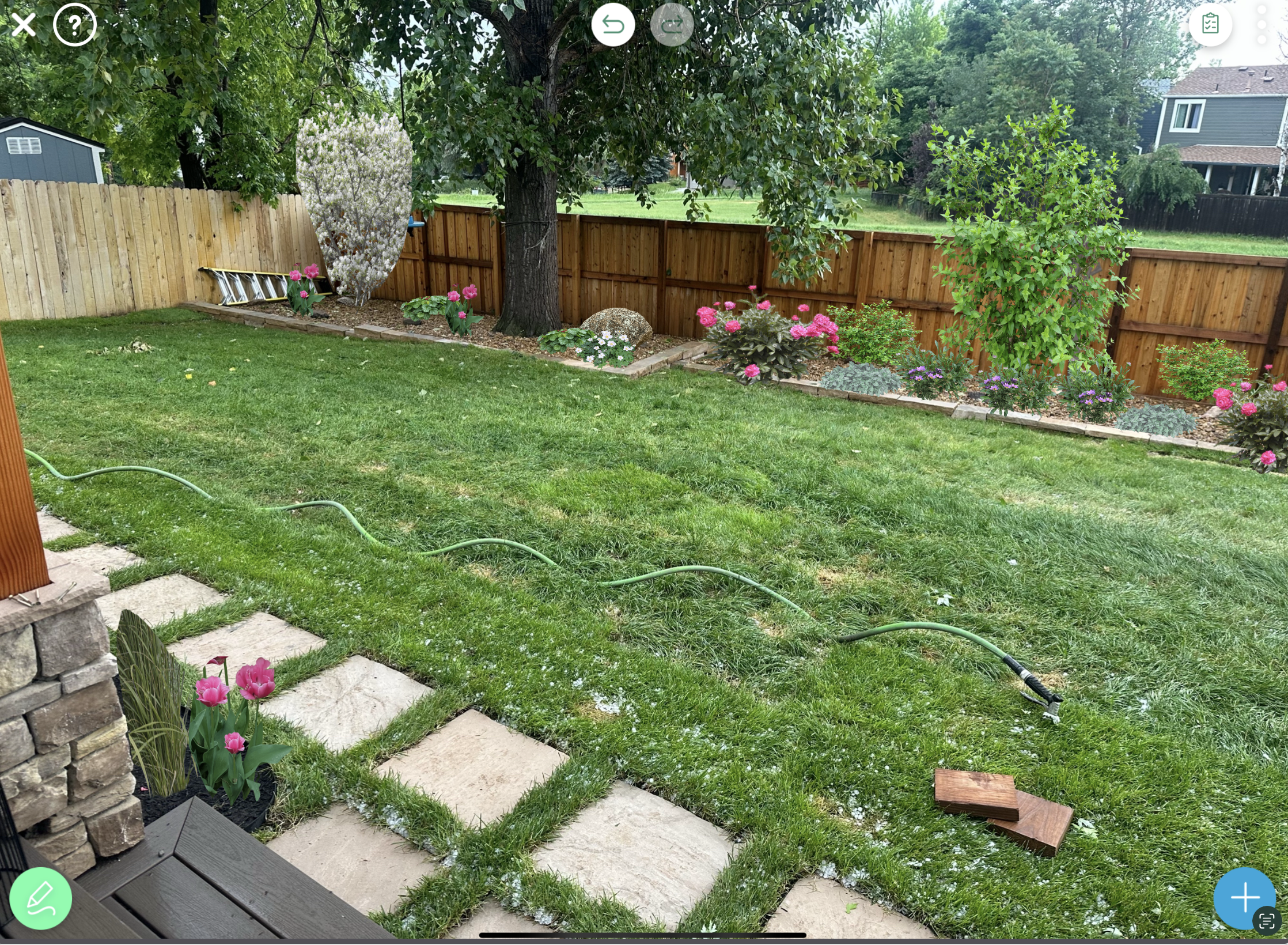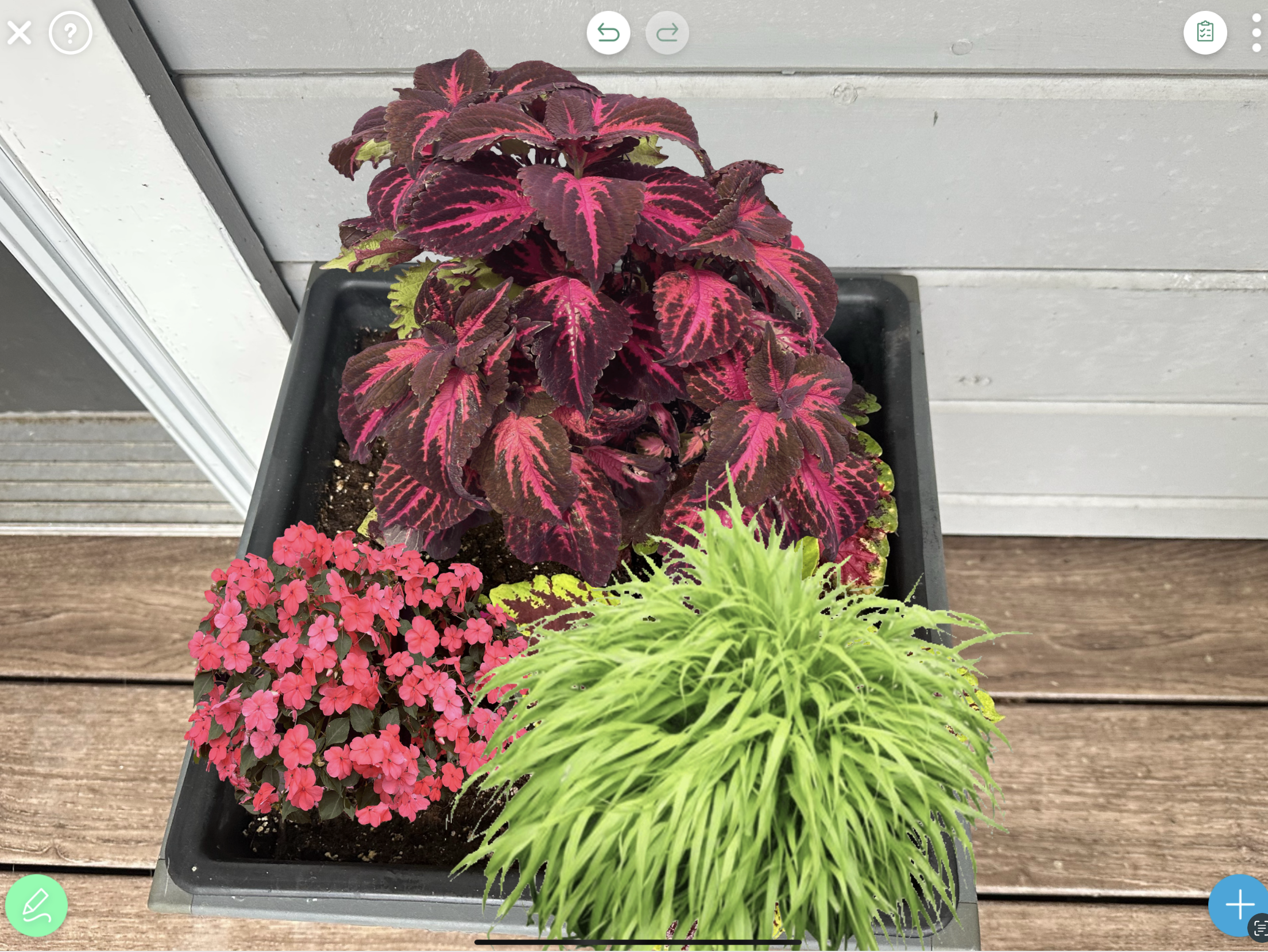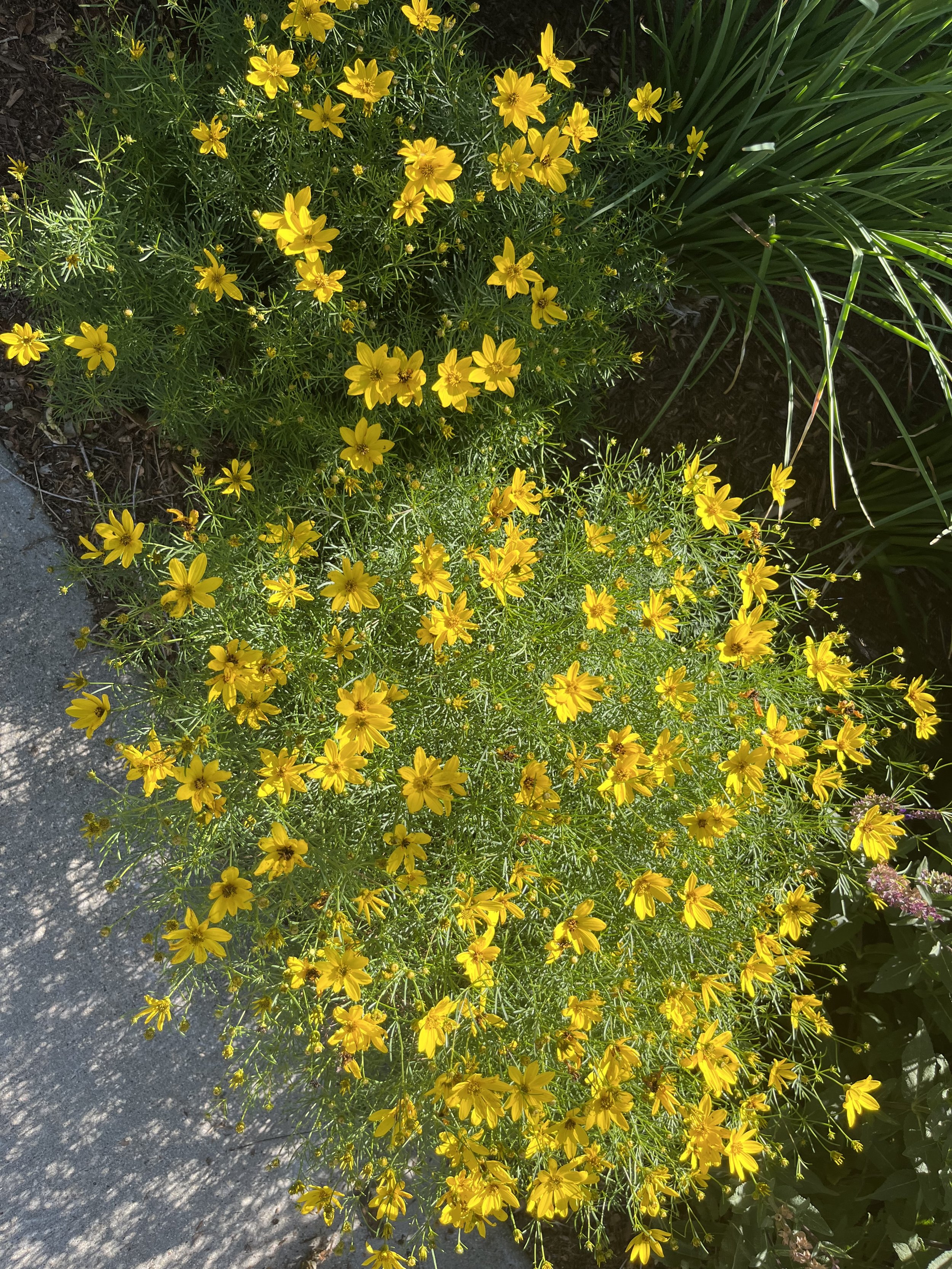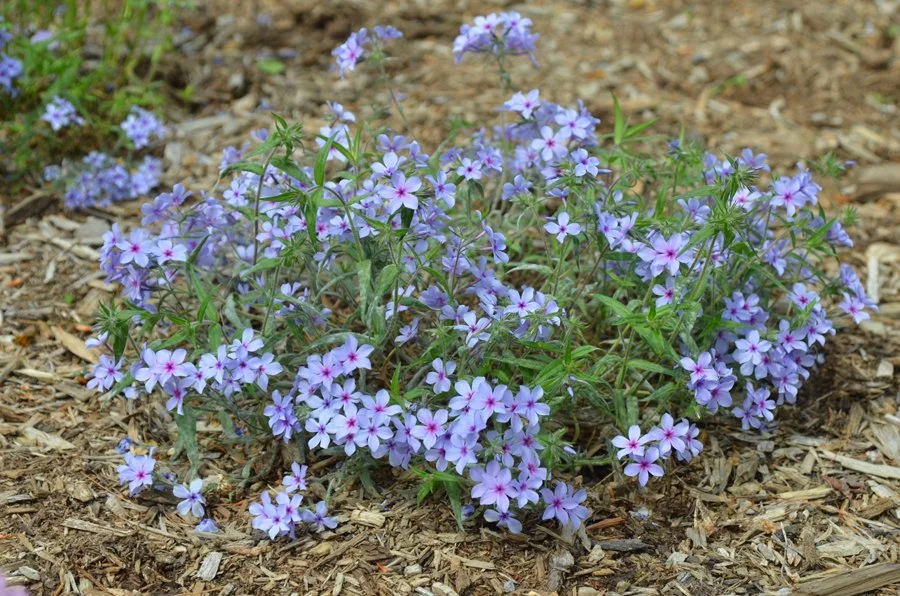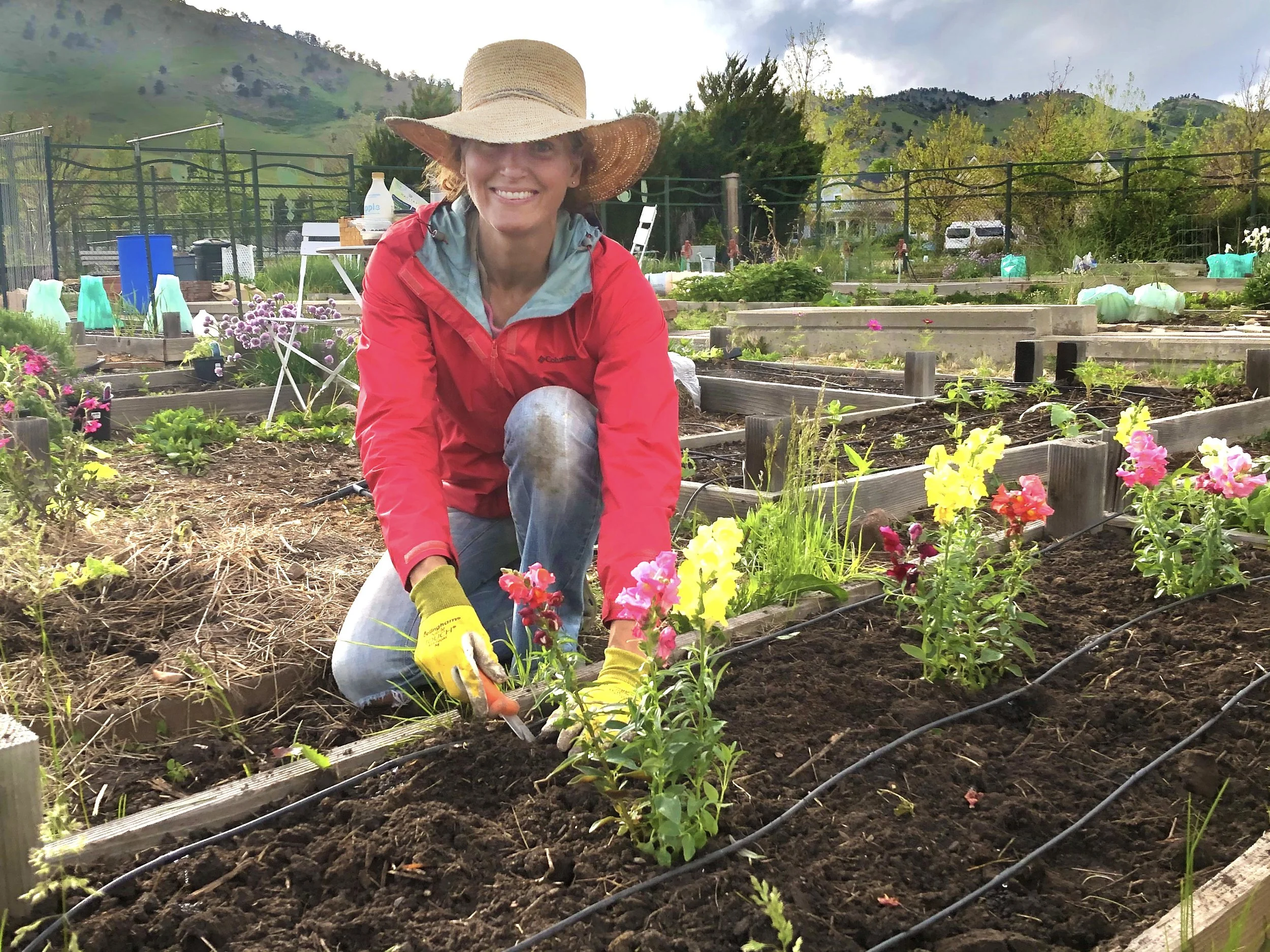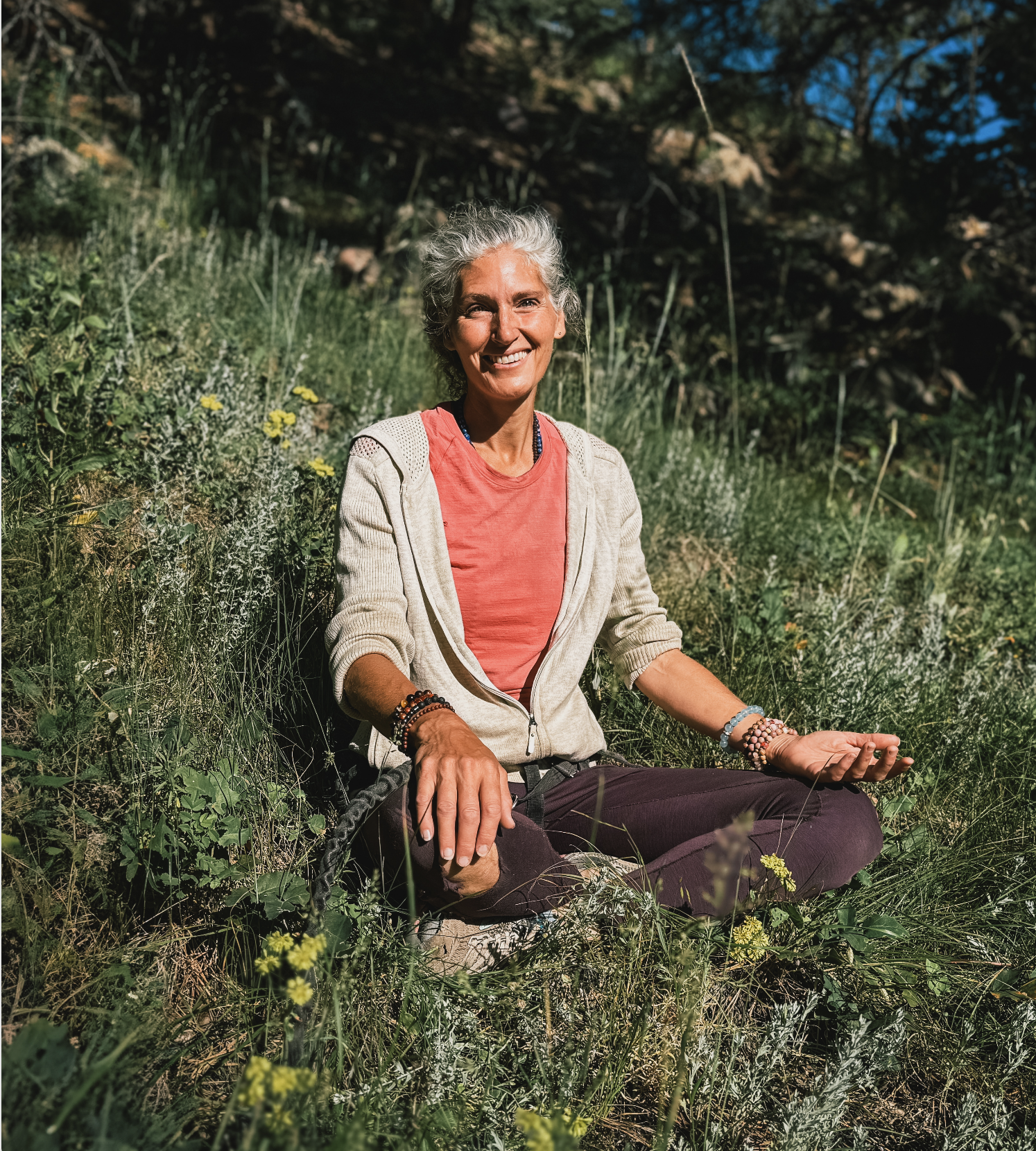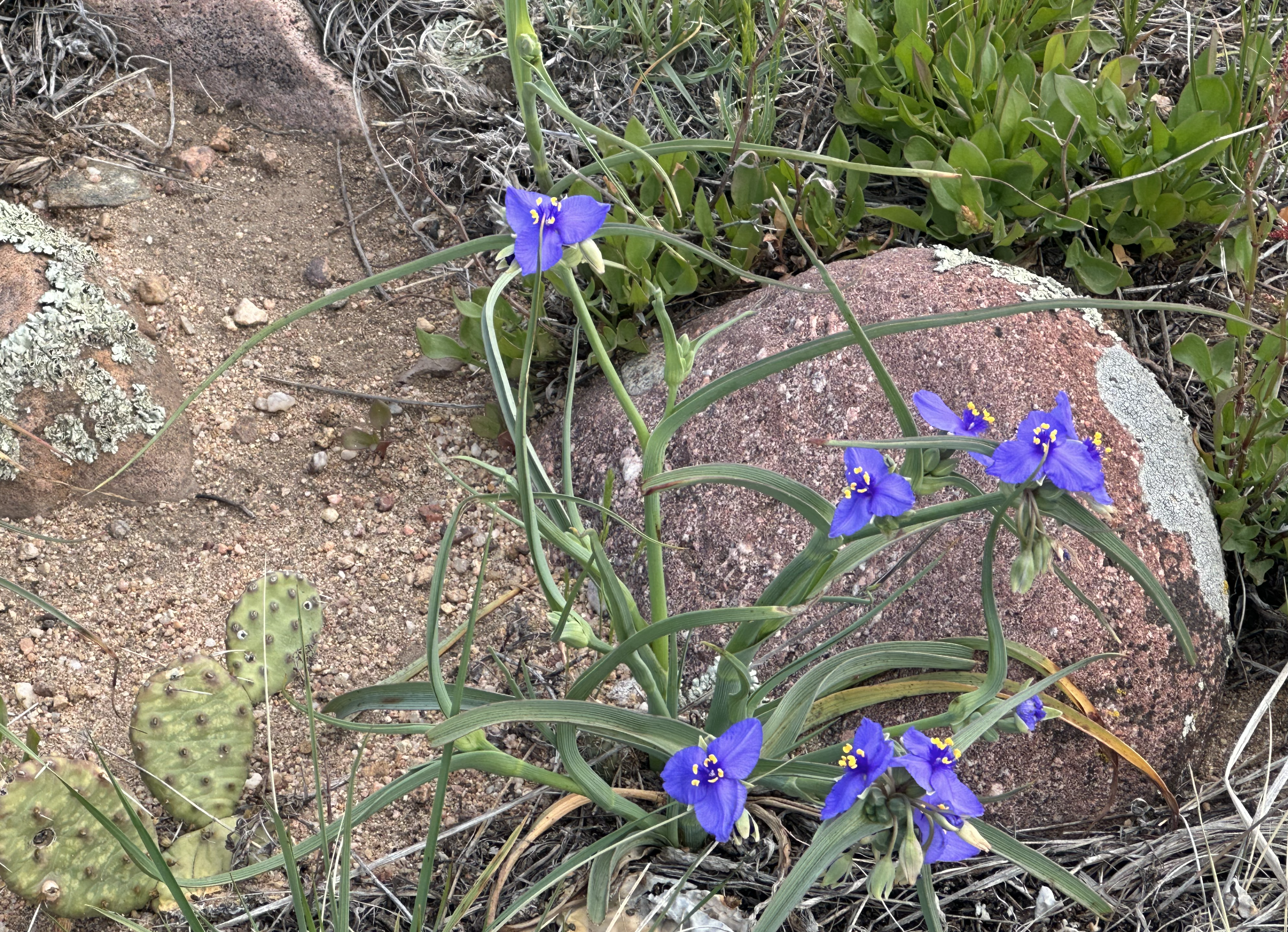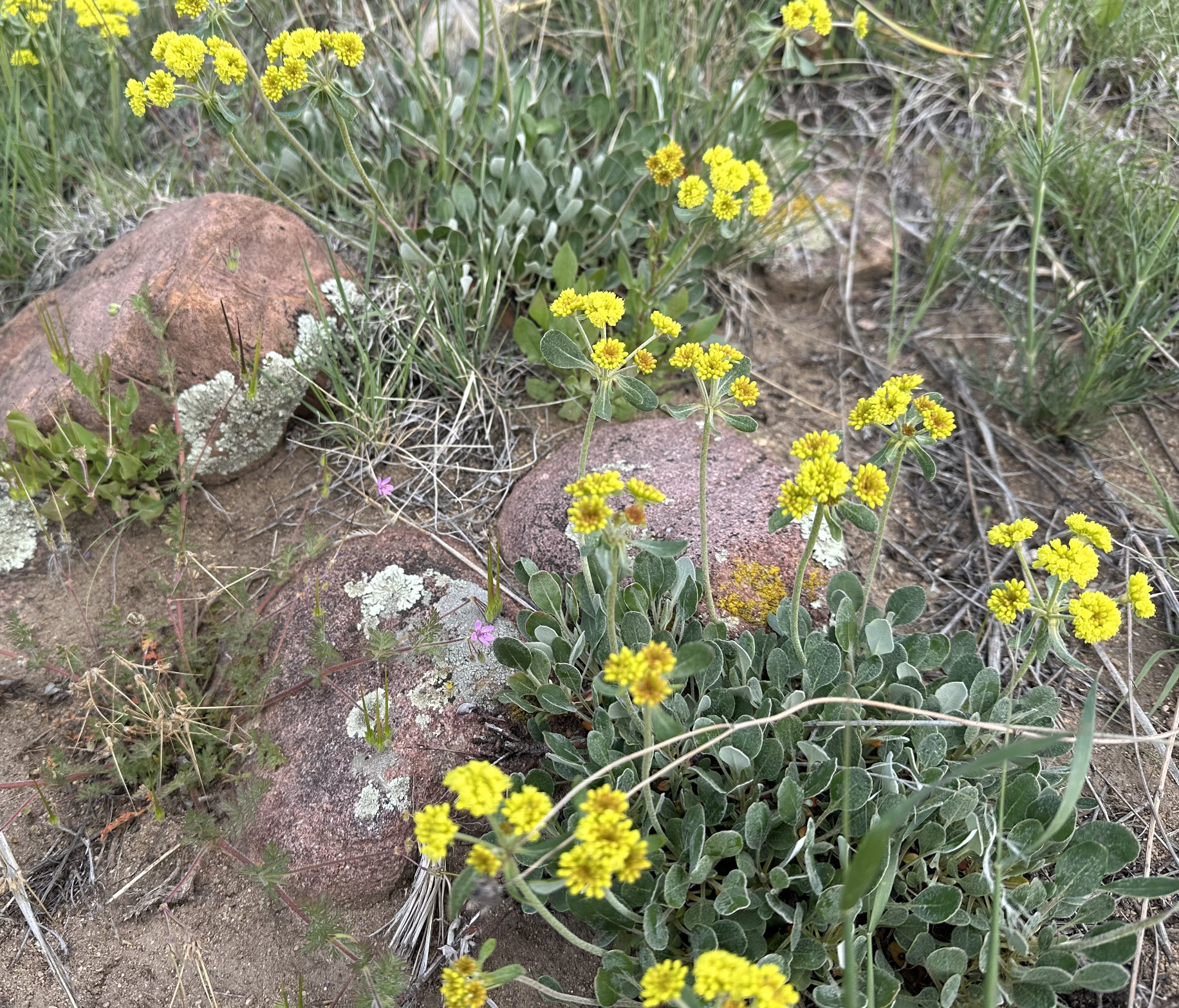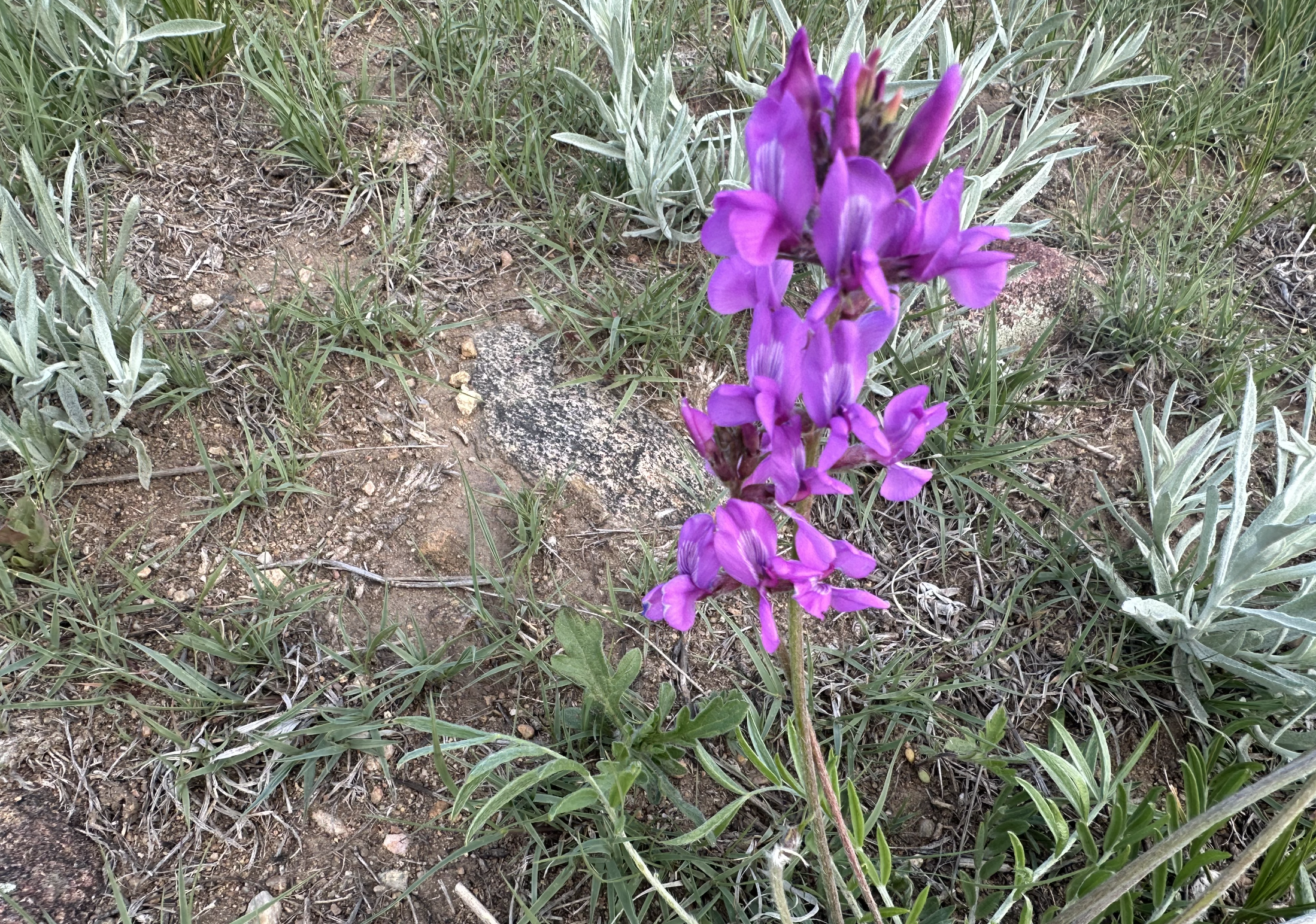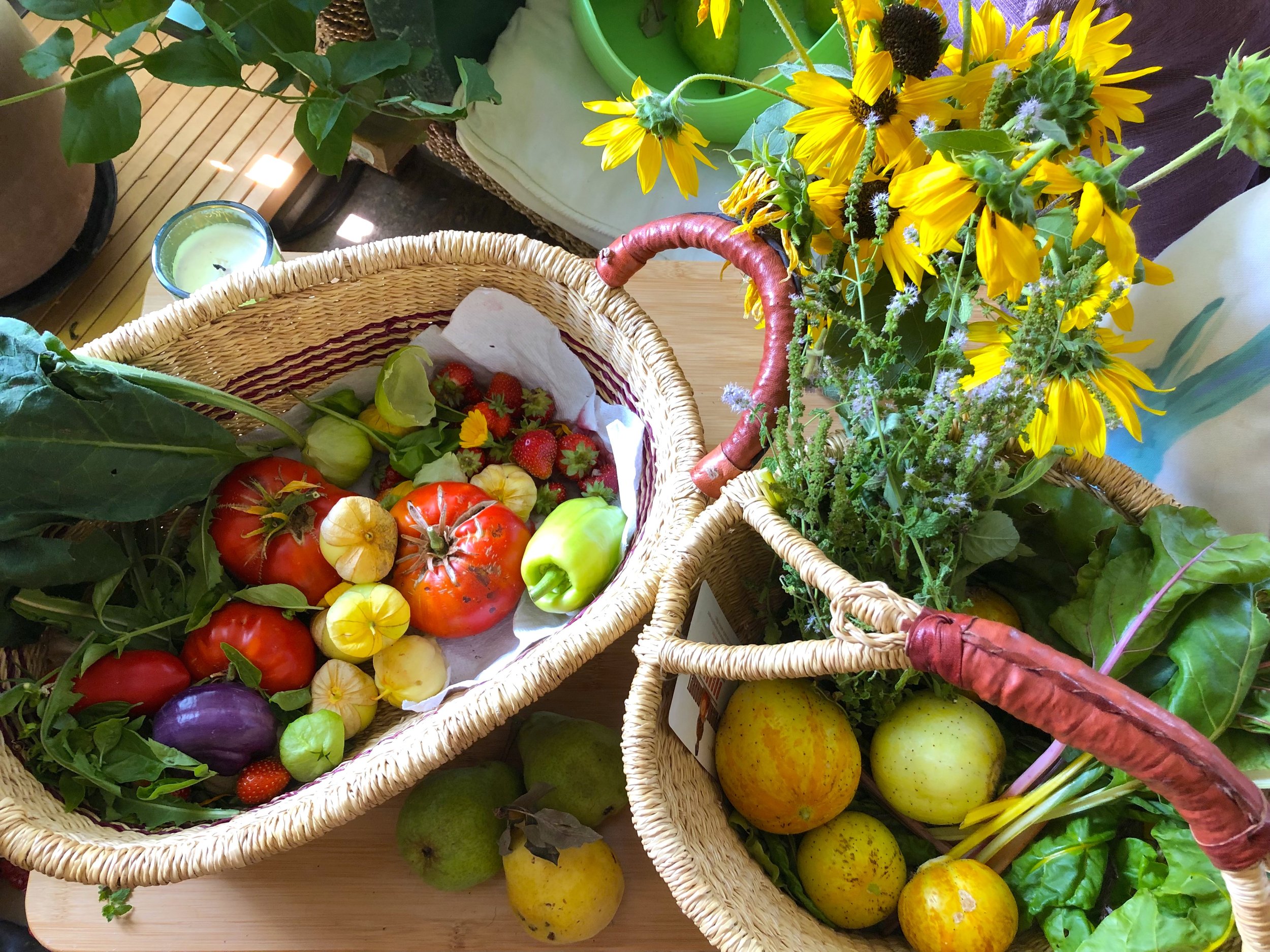510 Catalpa Court
Basia’s Garden Refresh
GARDEN PLAN | PLANT PICS | PLANT LIST | SOIL + GROWING TIPS | DIY GARDEN CARE | WILDFLOWER WALK | LOCAL VENDORS | YOUR PHOTO ALBUM
SPRING
PASQUE FLOWER | MOCK ORANGE | PEONIES | JAPANESE ANEMONE | TULIPS
SUMMER
ROSE OF SHARON | RUSSIAN SAGE | MAY NIGHT SALVIA | RED VALERIAN | SNOW IN SUMMER | COLUMBINE | CORAL BELLS
TALL GRASS | YELLOW TORCH LILY | SMALL HELIANTHUS (SUNFLOWER)
OR
YELLOW TORCH LILY | SMALL HELIANTHUS (SUNFLOWER) | PURPLE SALVIA
FALL
RUSSIAN SAGE | MAY NIGHT SALVIA | RED VALERIAN | CORAL BELLS
CONCEPT IMAGES
TALL YELLOW TORCHES + PURPLE SALVIA
SALVIA (PURPLE + WHITE) WITH PINK ROSES AND TALL GRASS
“TIGER EYES” STAGHORN SUMAC
Staghorn Sumac “Tiger Eyes” is an option for the back porch planters. It grows at this altitude, has a palm-like appearance, and also turns red in fall.
However, it needs FULL SUN and a LARGE POT to thrive, otherwise in partial shade it may appear less robust or have less coloration in fall.
CHECKLIST FOR POTTED SUMAC
VARIETY: While most sumac varieties are too large for containers, 'Tiger Eyes' staghorn sumac is a good fit due to its moderate size (6-8 feet tall and wide).
Pot Size: Select a pot that holds at least 7 gallons and has ample drainage holes.
Potting Mix: Use a well-drained, all-purpose potting mix.
Sunlight: Sumac prefers full to partial sun, so position the pot accordingly.
Watering: Container plants dry out faster, so water when the top couple of inches of soil are dry.
Winter Protection: Potted sumac may need protection from harsh winter conditions, such as moving it to a sheltered location or partially burying the pot,
FRONT PORCH
HOW TO ADDRESS FRONT PLANTERS
EXISTING
POTENTIAL
Q: COLEUS ISN’T DOING VERY WELL… WHAT TO DO?
ASSESSENT: COLEUS GROW BIG, SO ONLY ONE IS REALLY NEEDED PER POT.
POSSIBLY NOT DOING WELL DUE TO OVERCROWDING IN A SMALL POT, AND/OR SUN TOO HOT IN THE EARLY DAY. MULTIPLE ROOTS SOAK UP WATER FASTER, AND DRY OUT SOIL FASTER, LEAVING THE ONES CLOSEST TO THE EDGE VULNERABLE TO HOT MORNING SUN.
POTENTIAL SOLUTION
• SET A REGULAR WATERING SCHEDULE — OR PUT THEM ON YOUR AUTOMATED DRIP.
• CHECK TO MAKE SURE THE MORNING SUN ISN’T TOO INTENSE FOR THESE SHADE LOVING PLANTS. CHOOSE PART SUN PLANTS IF TOO MUCH SUN.
• TO USE WHAT YOU HAVE: PLANT JUST ONE COLEUS PER POT IN THE BACK CORNER WITH 1 SHADE FLOWER (eg IMPATIENS) IN THE FRONT CORNER
• TO BALANCE THE SPECIES: —SHADE MIX— PLANT ONE COLEUS (TALL, REAR) WITH ONE JAPANESE FOREST GRASS (SIDE) + 1 IMPATIENS (LOW, FRONT)
• TO GIVE THE PLANTS THE BEST REGULAR ‘HOME’ ON YOUR PORCH: GET A LARGER CONTAINER TO ALLOW AT LEAST 3-4” INCHES OF SOIL BETWEEN THE EDGE OF THE POT AND THE ROOTS OF THE PLANTS. THIS OFFERS INSULATION AGAINST EXTREME OR FLUCTUATING TEMPS, OR DRYING WINDS. THE EXTRA SOIL CAN ALSO SOAK UP AND PROVIDE MOISTURE BETWEEN WATERINGS, WHICH IS HELPFUL DURING THE HEAT OF SUMMER.
Plant Image Gallery
GENERAL LIST — YOU CAN FIND YOUR PLANTS AMONG THESE IMAGES
Your Plant List - TBD
BOTANICAL NAMES + ADDITIONAL INFO
SAMPLE Materials Gallery + List
RECOMMENDED MATERIALS — USEFUL IF YOU ARE GETTING MULCH OR DECORATIVE ROCK ETC
Grow, Rest, Repeat
Top 6 DIY Tips + Offers For
1) SOIL
2) GROWING
3) GARDEN CARE
4) FRUIT TREE GUILD
5) WILD FLOWER WALK
6) LOCAL VENDORS
“SOUNDS GREAT! LET’S BEGIN…”
How’s Your Soil?
THE HEALTH OF YOUR PLANTS IS FIRST AND FOREMOST ABOUT THE HEALTH OF YOUR SOIL
COLORADO SOIL STRUCTURE + AMENDMENTS
WELCOME TO COLORADO: A HIGH ALPINE DESERT
The “high alpine desert” (high and dry) zone of our Colorado front range means that the soil here is typically a rocky compacted clay, deficient in nitrogen or other nutrients. The soil here has a high “alkaline” pH of 7.0 - 8.3, due to the high amount of calcium carbonate (free lime), a reflection of limited rainfall and rock weathering.
To adjust for this, here are the elements we can easily add to this soil to make it more hospitable and to support your garden’s beauty and bounty.
While many native plants prefer less amendment, in most garden situations your soil will greatly benefit by the right help to support the ecosystem you’re planning.
START HERE + BRING YOUR SOIL TO LIFE
In perennial beds, after spring clean up, and before adding seeds or starts, it is highly recommend to:
1) OPTIONALLY Aerate or till the existing soil. By adequately loosening up and amending the soil, you are helping to create a more suitable environment for the plants that live there. Water and Air can move more easily through the substrate for better drainage, encouraging microorganisms to cultivate healthy root systems, which are able to transport available nutrients where needed.
In wild or more native gardens, nature’s symbiotic balance is best left as undisturbed as possible, or when growing vegetables or crops it can be difficult to apply a no-till practice such as this, so amending is a suitable alternative.
BALANCE YOUR SOIL STRUCTURE WITH THESE ELEMENTS
2) Add a moisture-retaining element such as rice hulls, pearlite, or vermiculite (expanded shale). If you want to support a local reseller, these are available at McGuckins. The volume needed will depend on your square footage as well as any unique microclimate influences of note.
The gardener’s goal here is to create a loamy soil strucure (an equal balance of sand/silt/clay). We’re going for the “goldilock’s zone” of not too heavy, not too light, but just right, with good moisture retention. Here’s how to identify what general soil type you may be working with and how to balance it:
→ DENSE DIRT OR CLAY Most of the Front Range of CO has dense or clay dirt masquerading as soil. So, if you soil is overly dense, compacted, or has a high clay content, you’ll want to lighten it up. For this, you can use rice hulls, pearlite, and/or vermiculite. These elements act to retain moisture by wicking and dispersing, making it available to the roots in a more even distribution over a longer period. Coconut coir and spanghum moss also provide a lighter weight to the surrounding soil media thus aerating and lifting the density.
→ SANDY SOIL If your soil is too sandy or dry dusty silt, water may run through it too fast, or it may not cultivate the density necessary to support the kind of microbial activity that will truly nourish your plant roots. So you’ll want to create more moisture retention and build up the structure slightly. In this situation, coconut coir acts as a fine moisture retention element, or you could use vermiculite for even more retention. Consider removing a % of the existing media and/or adding a denser raised bed soil to bring the structure into balance.
For moisture balance, remember this general rule of thumb: Use rice hulls, coconut coir or perlite when you want better drainage and aeration. Use vermiculite when you want more moisture retention.
What’s Your Starting Soil Type?
Use Amendments To Balance Soil Structure
Here’s What A Healthy Balance Might Look Like
NEXT FERTILIZE YOUR SOIL WITH
COMPOST + NUTRIENTS
There is a difference between soil and dirt. Dirt can be any media such as sand/silt/clay, but it lacks the living microbes or fungal networks that create the ‘soup’ of life within which plant roots symbiotically thrive. Soil, on the other hand, can have a base of the same media, yet it is ALIVE, providing a living soup for such organisms. Soil has a balanced structure, density, and most importantly: the biodiversity necessary to support a living eco-system thriving within. Here’s how to build biodiversity and healthy structure into your Colorado soil:
COMPOST
3) Add a volume of organic compost suitable for vegetable or medicinal garden use. Start by adding a layer to the top of the exposed soil and then mixing it in. Great composts to use can be anything from Alpaca or Chicken poop from your local farm (make sure it’s not too “hot”), to bagged compost. Here are our recommended bagged planting soil blends, available at local suppliers such as McGuckins:
• The Bomb — by Paonia Soil Co
• Sheep ‘n Peat — by Earth Essentials
• Ocean Forest — by Fox Farm
FERTILIZERS
4) Add nutrients that help plants grow. Your typical fertilizers will have a blend of Nitrogen—Phosphorus—Potassium (N-P-K). Together these provide a spectrum that meets plant needs. You can also add other natural elements such as worm castings, bat guano, fish or kelp emulsion, blood or bone meal. Keep in mind that each of these has their own ratio, so make sure it’s what your plant needs before applying. We recommend the following brands:
• Root | Grow | or Bloom — by Age Old Organics
• Hemp Dress — by Key To Life
BOOST SOIL BIO-DIVERSITY
5) Add mycorrhizae (a fungus that grows in association with the roots of a plant) for help with nutrient uptake to help plants and ecosystem grow. Establishing this root-based systemic network is essential in that it helps plants attract and absorb nutrients from the surrounding soil that its roots alone would not be able to draw up. It’s like ‘nature’s wifi’— helping connect the neighborhood bio-chemically through the soil. Nature takes time to build this, and we can help speed it up by introducing the mycorrhizae.
• Mycorrrhizae — by Big Foot
ADD WATER SLOWLY AS YOU MIX YOUR SOILS
6) Slow water. Let the amendments soak down with slow watering (to avoid fast runoff) before planting. Soaking, rather than spraying, will give your soil time to sink in and begin to come to life. Make sure the water soaks deeply down and doesn’t just sit in the top few inches of your soil.
PLANT YOUR SEEDS + STARTS
7) Now your seed and starts are ready to be planted. By nurturing the soil before planting, you increase the success rate of your introduction, robustness, and longevity of your new plants, as well as contribute to a healthier ecosystem.
Additional Natural Products
CLICK HERE FOR A FULL LIST OF RECOMMENDATIONS
for horticultural and vegetable gardens
. . .
If you find this information helpful and want to learn more…
Subscribe to my monthly Garden Club!
You Plant. But Do You Grow?
HIGHLIGHTS FOR CULTIVATING ECOLOGY + SYMBIOSIS IN YOUR LANDSCAPE
Watch Others Do It + Then Try It Yourself
We Suggest The Following YouTube Channels As You Learn The Art/s Of…
DIY GARDEN CARE : Get Started with Rebecca’s Guidance
Schedule Your 3 Month Pack of Monthly Hands-On Garden Care with Rebecca. She’ll come garden with you once a month. You can learn conversationally while you pick up what to do with ‘muscle memory’. Ask your questions and get more than information…. discover a new perspective and enjoy your garden more! Be more efficient and learn what’s needed month by month throughout the season…
Book Your GARDEN CARE 2 mo Package or Monthly Subsription With Rebecca Now:
• 2 Packs can be used consecutively, or scheduled as needed (for travel or weather) anytime this season May-Oct.
• Join our seasonal “Garden Club” monthly subscription for regular monthly Garden Care DIY Meets (to get things done)!
Garden Care Is… Building your Garden step by step
√ Learning How To Care For + Relate To Your Garden
√ Once a Month On-Site Guidance
√ Gardening Side by Side
√ Gentle Maintenance and/or New Plantings or Transplants
What Does A Garden Care Session Cover?
• Seasonal Care for General Garden or specific species
• Learn about select species that inspires you
• Tips + Tricks for best DIY Maintenance practices, solutions, assessments, plants, organic products, and more (based on over 15 years in the trade)
• Gentle Maintenance (what we can get to easily without over doing it. This means it may not be exhaustive or complete, as the focus is on education rather than just service).
• Planting or Transplanting — If you bring a few plants to introduce to your garden, we’ll do it together so you know how and can DIY
• If there are things you can’t do, I’ll be available to help with that while you learn
SAMPLE Monthly Topics
• MAY — DIY Hands-on Maintenance (seasonal clean up) and Soil Structure in preparation for planting
• JUN — Plant Selection and the importance of the elements in different micro-climates of the yard
• JUL — Bloom time and potential transplants or seasonal additions
• AUG — Creative side projects, custom solutions, or whimsical additions that bring your garden ‘together’ for your satisfaction
• SEP— Outlining a Garden Plan by season as a custom ‘users manual’ that you, your family, or anyone else you hire to help can refer to or use, for proper care.
• OCT — What to cut back, when, and what to leave over winter for the birds, bees, and pollinating insects that keep our eco system healthy
Why Garden Together? Benefits of DIY (Hire a service specialist less often).
Hands-on learning in your garden is the best way to fast track your muscle memory and know what to do when. It helps you be more efficient with your labor (less time or effort saves you from inflammation or exhaustion), more cost effective, and easier to take care of it yourself in future when you know how to ‘read’ your garden at a glance, and know the best steps to address what’s really going on.
Just like nature, your time in the garden is a continuing conversation— it is not static (or one-and-done), it’s cyclic and evolving. So monthly meets are designed to be a regular time to check-in on the evolving growth of the plants and ecology (seeded by the design if you have gotten a design with Rebecca). It’s a time to give attention to whatever wants to come to the fore, to address or enjoy what’s happening now, and to strategize for the future.
The benefit of a regular meet is more than maintenance, it helps refresh your thinking and allows for greater contextual understanding, revelations leanding to simple efficiency and greater patience. Without even knowing it, when we step away from our technology and get out in the garden we feel a sense of grounding and alignment with nature and our own embodiment. This helps balance our body-mind connection, and can positively affect our health which in turn can support our goals and well being.
And just like the seasons, this is your chance to focus on a relevant topic or garden area per month or per session!
Check-in: Where Are You Starting From | What Do You Want To Learn?
• Vegetable Gardens
• Herbs and/or Medicinal Plants
• Native Plants
• Permaculture
• Fruit Tree Guilds
• Forest Gradening
• The Basics
• How to Maintain Your New Garden Installation
• Plant Selection
• How to Prep, Install, or Maintain Xeriscape and Low Water / Low Maint
• Consider Your Irrigation
• Perennial Gardens
Guilding Is For More Than Gold…
Create A ‘Plant Guild’ For Your Trees!
SEE SAMPLE GUILD FOR FRUIT TREES — DECIDUOUS TREES HAVE FAVORITE COMPANIONS AS WELL TBA
Take A Wildflower Identification Walk
JOIN REBECCA ON A MAGICAL SHORT MORNING WALK OR HIKE THROUGH WILDFLOWER TERRITORY
SMALL GROUP MEET UP STARTS RIGHT FROM ONE OF BOULDER’S POPULAR CREEK TRAILS
ASK ME ANY QUESTIONS YOU MAY HAVE…
• WHEN IS THE NEXT WILDFLOWER HIKE?
• CAN I DO A WALK INSTEAD OF A HIKE?
• WHAT TIME OF DAY? HOW LONG?
• WHERE IS THE TRAIL + WHERE TO MEET?
• WHAT TO EXPECT FROM THE EXCURSION?
• SHOULD I BRING ANYTHING?
On Your Short Hike…
Discover Native Flowers You Can Also Use In Your Local Garden
• LEARN WILDFLOWER NAMES + BLOOM TIMES
• TAKE BEAUTIFUL PICTURES FOR INSPIRATION
• ENJOY NATURE’S BOUNTY ON AN EARLY MORNING ADVENTURE WALK
Local Nurseries + Vendors We Recommend
GET YOUR PLANTS OR PRODUCTS LOCALLY WHENEVER POSSIBLELocal Nurseries + Vendors We Recommend
Find your seeds or plant starts here, as well as tools, materials, and more! We’re pleased to share the health and the wealth of opportunity among these associations from our many professional and social circles. Rebecca’s Gardens Design makes it our goal to stay as consistent as possible with the larger picture holistic ecological values for plants, people, and our planet. Thank you for your commitment to sourcing biodynamic or organically grown plant species or varieties, soil, or other products.
Your Photo Album
CONCEPT SKETCHES | BEFORE + AFTER IMAGES
Thanks for designing with Rebecca’s Gardens!
A Fun Harvest Mid-season
Tasty healthy food

